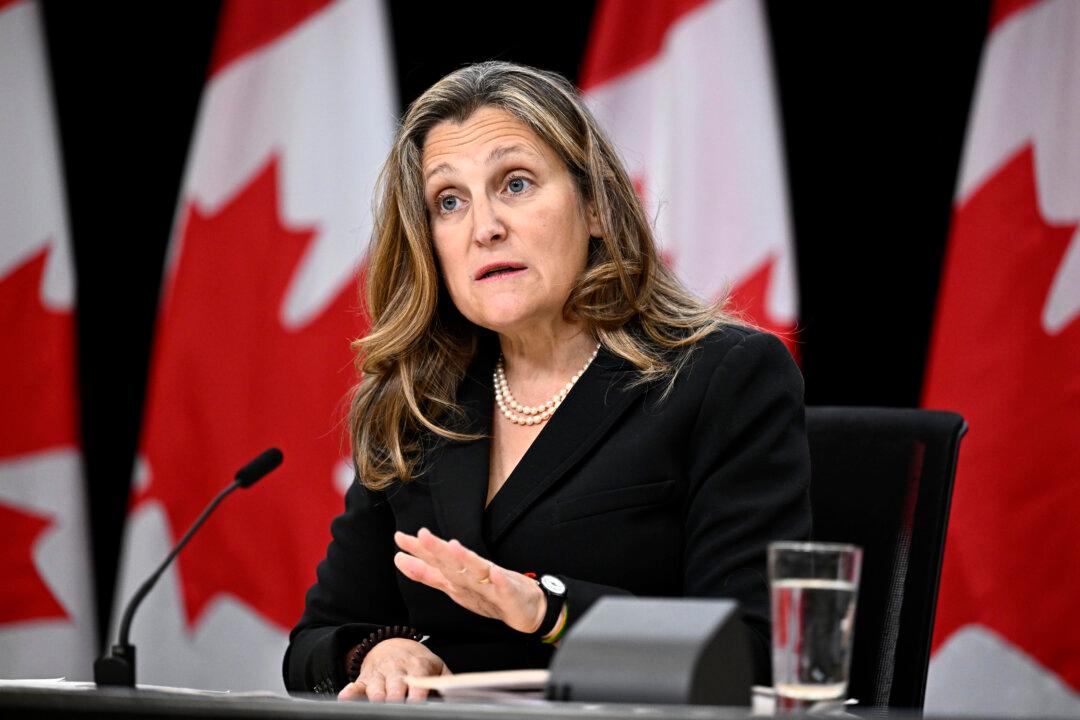The federal government plans to table its Fall Economic Statement on Dec. 16, giving Canadians a view of the country’s financial situation as it heads into 2025.
While this update is often a closely-guarded secret in Ottawa, the government is likely to reveal whether it has stayed true to its economic guardrails laid out in 2024, outline additional measures to increase border security in response to U.S. tariff threats, and give updates on its plan to stimulate housing construction.
During a Dec. 10 press conference, Freeland said the government will meet the 42.1 percent debt-to-GDP ratio for the 2023–2024 fiscal year, which was a promise made during the previous Fall Economic Statement in November 2023. However, when repeatedly asked if the government will stay true to its promise to keep the deficit below $40.1 billion, the deputy prime minister did not answer.
“I was careful and precise in my comments about the debt-to-GDP ratio. Maintaining a declining debt-to-GDP ratio is our fiscal anchor. That is important,” Freeland said. “When it comes to the deficit, Canada has the lowest debt-to-GDP ratio and the lowest deficit in the G7.”
Conservative Leader Pierre Poilievre said during Question Period on Nov. 10 that the $40.1 billion number was like a guardrail that the Liberal government was going to “smash into,” having the effect of driving up inflation. “[Freeland’s] like a bus driver, saying she’s going to come just short of hitting that $40 billion guardrail. And then some crazy lunatic comes in, grabs the steering wheel, and jerks it sharp to the left through the guardrail,” he said.
Prime Minister Justin Trudeau responded that Poilievre was continuing to “talk down Canadians and the Canadian economy,” and that the federal government will continue supporting Canadians.
The upcoming fiscal update will also give updated economic forecasts for Canada, following several changes to the country’s immigration plans and interest rates. In October, Ottawa announced it will lower its immigration targets from 500,000 new permanent residents in 2025 and 2026 to 395,000 in 2025, 380,000 in 2026, and 365,000 in 2027.
Border Measures, Housing
The Fall Economic Statement is also likely to include details on further measures to increase border security, which has become a priority for the federal government since incoming U.S. President Donald Trump threatened to put 25 percent tariffs on Canadian imports. Trump has called for Canada and Mexico to take action to secure their borders and stop illegal drug smuggling and immigration, or he will implement the tariffs after he is inaugurated in January 2025.Since that threat was made, Public Safety Minister Dominic LeBlanc said Canada has committed to procuring additional drones and police helicopters for the border, as well as redeploying border personnel. On Dec. 11, LeBlanc said the federal government has worked with the provinces to develop a border plan and will “share details of this plan with the incoming Trump administration and with Canadians in the coming days.”
The government said the policy is “just one of many measures in the 2024 Fall Economic Statement to build more homes, faster.”







